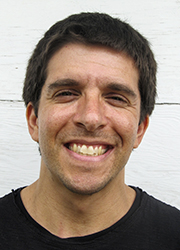Small scale projects can be a big deal for downtown, says neighborhood group
In recent years, cities have utilized the concept of "tactical urbanism" to enhance downtown neighborhoods with short-term, community-based projects like pop-up parks and street art campaigns.
Cleveland planners have engaged the metro in its own urban improvement endeavors including SmallBox, an initiative that changed refurbished 8 foot by 20 foot shipping containers into startup small businesses. Livable city advocate Mike Lydon will discuss both local and national urbanism trends during a June 11 luncheon sponsored by Historic Gateway Neighborhood Corporation, Historic Warehouse District Development Corporation and PlayhouseSquare District Development Corporation.
Lydon is an internationally recognized urban planner as well as a partner in the Street Plans Collaborative, a group aiming to reverse suburban sprawl through walkable, mixed-use neighborhoods. Lydon's talk is opportune for a downtown aiming to jumpstart ambitious change via low-cost, potentially high-impact techniques, says Tom Starinsky, associate director of both the Warehouse District and Gateway neighborhood organizations.
"Cleveland has a very strong community-led urban design community," Starinsky says. "(Lydon) is bringing these innovative ideas here so the city can stay in step with what's happening in the world."
Among other projects, the Cleveland organization has transformed parking spaces adjacent to the small-box stores into a pocket park. The park, decorated with shipping pallets converted into funky furniture, will host mini-concerts and other events, and is designed to be enjoyed by residents, office workers and visitors alike.
The Gateway District group, meanwhile, has plans for a parklet and bike corral on Euclid Avenue that will repurpose parking spaces in front of several businesses and create a semi-enclosed respite for pedestrians. In addition, the group is planning to build sidewalk parks throughout the neighborhood in areas where the pavement is especially wide, using a variety of seating types where people can sit and eat lunch.
Urban planner Lydon, who has promoted similar efforts throughout the world, believes tactical urbanism projects can scale up without losing their connection to the neighborhoods that spawned them. This connection is a vital condition for any enduring successes locally, says Starinsky, particularly if new projects can empower a generation of engaged citizens, urban designers and policymakers.
"People involved with the city know more than anyone what will make it livable," he says. "There are infinite ways to make Cleveland better long-term."




